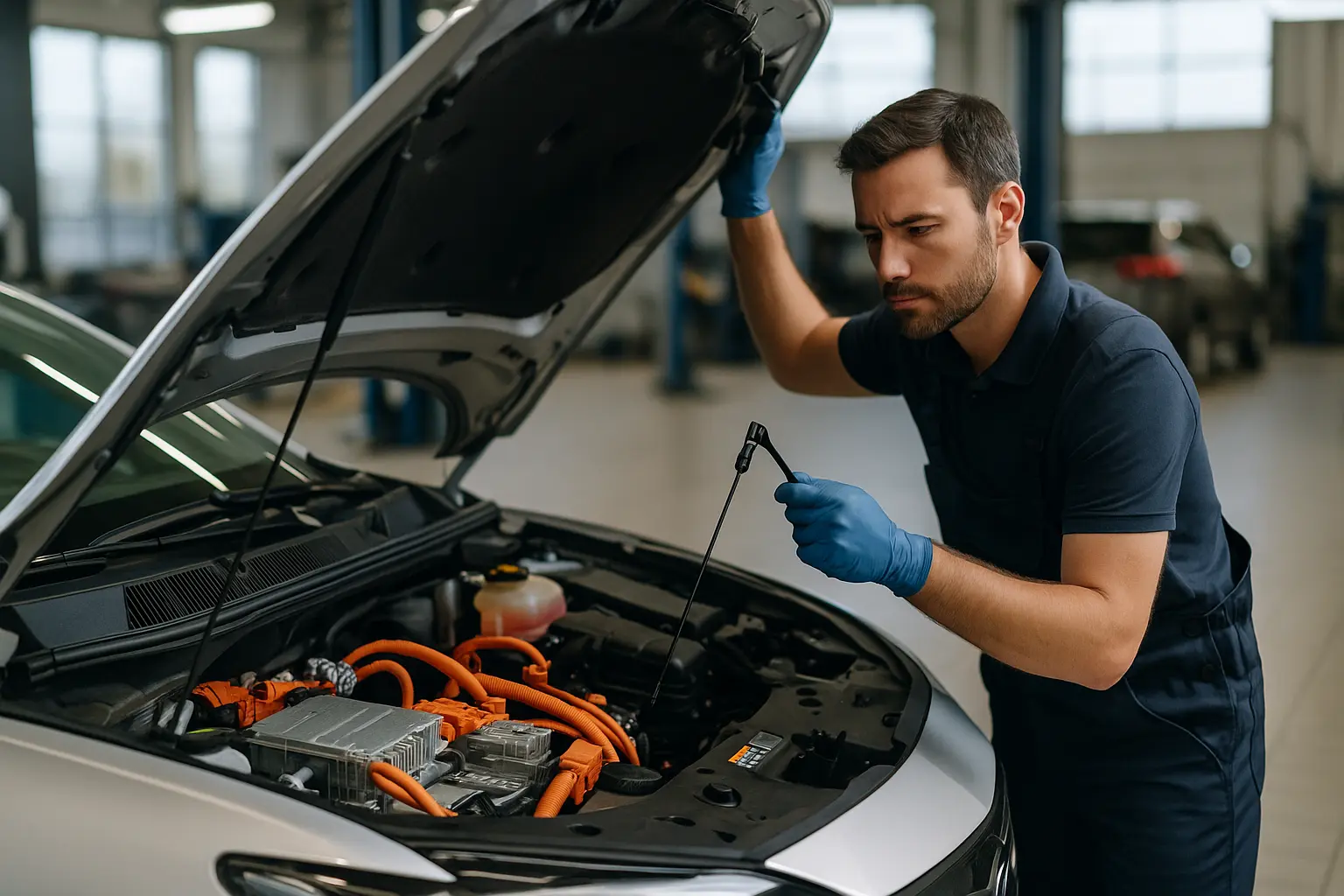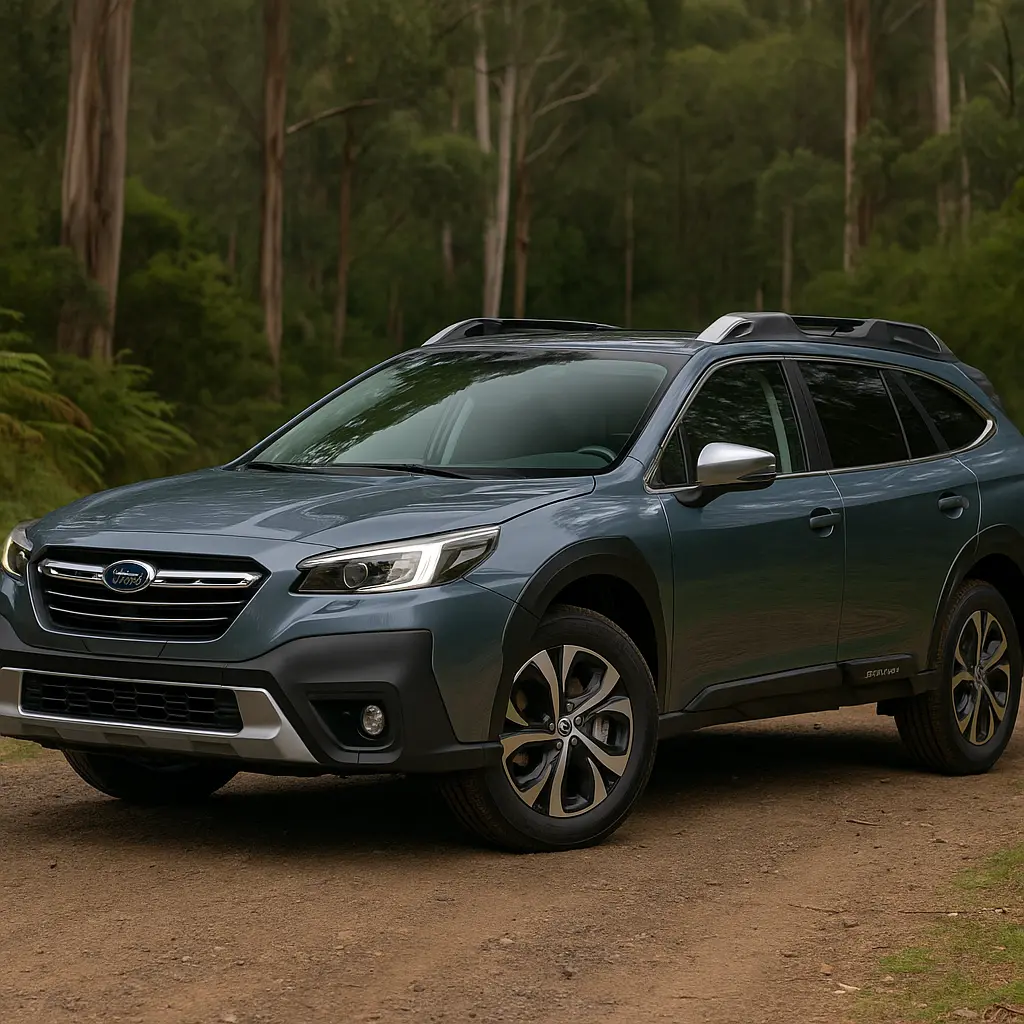How Often You Should Really Service a Modern Car in 2025
Servicing your car has always been one of the golden rules of motoring, but in 2025, with the rise of electric vehicles, connected diagnostics, and extended service intervals, Aussie drivers are left wondering — how often do you really need to service your car?
This blog will break down everything you need to know about car servicing in 2025, including:
Updated manufacturer schedules
Service needs for electric, hybrid, and petrol/diesel vehicles
How advanced tech affects your intervals
The dangers of skipping regular maintenance
Real-world advice from mechanics and Aussie drivers
Tips for extending your car’s life
🚗 What’s Changed in 2025? A Quick Look at Modern Vehicle Tech

Modern cars in 2025 are smarter and more durable than ever before. Whether it’s a petrol-powered hatch or a full electric SUV, vehicle systems are heavily monitored by software, offering real-time diagnostics.
Key changes in 2025:
Longer service intervals (up to 20,000–30,000 km for some brands)
Predictive maintenance alerts via in-car infotainment or apps
More durable components like synthetic oils and long-life fluids
Minimal moving parts in EVs, reducing service frequency
OTA (Over-the-Air) updates fixing software bugs remotely
But even with these improvements, regular maintenance is still essential to avoid long-term problems.
🛠️ General Service Guidelines for 2025 (By Vehicle Type)
🔹 Petrol and Diesel Vehicles
Typical service interval (2025): Every 12 months or 15,000–20,000 km
Most manufacturers still recommend annual servicing, regardless of how far you drive. Oil, filters, and brake inspections remain staples. Brands like Toyota, Mazda, and Hyundai follow this standard.
However, vehicles subjected to "severe conditions" (e.g. towing, high heat, dusty outback roads) may require more frequent maintenance (every 6 months).
Common checks include:
Engine oil & filter replacement
Brake pad inspection
Tyre rotation & pressure check
Fluid levels (coolant, transmission, power steering)
Battery health
Cabin and air filters
🔹 Hybrid Cars
Typical service interval (2025): Every 12 months or 15,000–20,000 km
Hybrids have both an internal combustion engine and electric components. While the petrol side needs similar attention to regular cars, electric drive units require far less frequent maintenance.
Check-ups should include:
Inverter coolant check
Battery system diagnostics
Brake system inspection (due to regenerative braking, pads wear slower)
Standard engine oil and filter service
Hybrids like the Toyota RAV4 Hybrid or Kia Niro benefit from regenerative braking, extending brake life, but regular checks remain essential.
🔹 Electric Vehicles (EVs)
Typical service interval (2025): Every 24 months or 30,000 km (depending on brand)
EVs like the Tesla Model 3, Hyundai Ioniq 6, or BYD Seal have fewer moving parts, meaning reduced servicing needs. But don’t skip maintenance altogether.
Key service items include:
Brake fluid change (every 2–3 years)
Cabin air filter (annually)
Tyre rotation (every 10,000–15,000 km)
Battery coolant (every 4–5 years)
Software checks and updates
Note: EV brake pads last longer due to regenerative braking, but tyres may wear quicker due to heavier weight and instant torque.
🧰 Do You Need to Stick to the Manufacturer’s Schedule?
Short answer: Yes — especially if your car is under warranty.
Why it matters:
Following the manufacturer’s schedule protects your factory warranty.
Services are logged in your digital service history, helping resale value.
Dealers can detect issues early (e.g., DPF clogging in diesels, hybrid battery wear).
However, you don’t have to go to a dealership. In Australia, as long as the independent mechanic is licensed and uses OEM parts, your warranty remains valid.
🔧 Major vs Minor Service – What’s the Difference?
Understanding what type of service your car needs helps avoid unnecessary costs.
| Service Type | When | What’s Included |
|---|---|---|
| Minor Service | Every 12 months or 15,000 km | Oil change, filter replacement, basic inspection |
| Major Service | Every 2–3 years or 40,000–60,000 km | All minor checks plus brake fluid, coolant, spark plugs, timing belt (if applicable), software updates |
| Logbook Service | As per manufacturer | Tailored to car make & model, includes items specific to that model |
🌡️ Factors That Affect How Often You Should Service
Even with guidelines, every car and driver is different. Here’s what can impact how often you should service your car:
1. Driving Style
Aggressive driving, frequent stop-starts, and heavy acceleration wear out parts faster.
2. Climate and Environment
Australia’s extremes — from Perth’s heat to Tassie’s cold — can strain batteries, fluids, and tyres.
3. Load and Towing
Towing trailers or caravans? That stresses your transmission, brakes, and cooling systems. You’ll need more regular check-ups.
4. Urban vs Regional Driving
City driving = more stop-start cycles. Rural driving = dust, long distances. Both stress different systems.
5. Service History
A car with a clean, regular history lasts longer and retains more value. Skipping even one service can raise red flags.
🔋 EV-Specific Maintenance Tips in 2025
Even though EVs are low maintenance, they’re not no maintenance. Here’s how to keep yours running like new:
Monitor tyre wear – Check every 10,000 km
Rotate tyres – Every 15,000 km (even wear)
Brake inspection – Check every 12 months despite low usage
Battery cooling system – Flush and replace coolant every 4–5 years
Charge port and cable – Inspect for damage or corrosion regularly
Firmware updates – Ensure your OTA updates are enabled
💸 How Much Does Car Servicing Cost in 2025?
Costs vary based on brand, vehicle type, and whether you’re using a dealership or an independent mechanic.
Typical price ranges:
| Vehicle Type | Minor Service | Major Service |
|---|---|---|
| Petrol Car | $250–$400 | $600–$1,000 |
| Hybrid Car | $280–$450 | $650–$1,100 |
| EV | $150–$300 | $400–$700 |
| Diesel/4x4 | $350–$500 | $800–$1,200 |
Pro tip: Some manufacturers (like Kia, Toyota, Hyundai) offer capped-price servicing plans — helpful for budgeting over 3–7 years.
🧾 Servicing Myths Debunked in 2025
Let’s clear up some common misconceptions Aussie drivers still believe.
❌ “EVs Don’t Need Servicing”
False. EVs need fewer services, but brakes, tyres, and battery systems still wear out.
❌ “If I Don’t Drive Much, I Don’t Need a Service”
Wrong. Oil degrades over time, tyres age, and seals can dry out. Time-based servicing is just as critical.
❌ “Only the Dealer Can Service My New Car”
Nope. Under Australian law, independent mechanics can service your car without voiding warranty — if they follow the correct process.
❌ “Modern Cars Can Go 50,000 km Without a Service”
That’s a fast track to expensive repairs. Most systems still rely on fluid lubrication and physical wear items.
🧠 The Role of Smart Tech in Maintenance
Many 2025 cars come with connected apps that notify you of:
Service due dates
Fluid level warnings
Battery degradation (EVs)
Brake pad wear
Tyre pressure
Some models (e.g. Tesla, BMW, Mercedes) even pre-diagnose issues and send reports directly to the workshop before your booking.
This doesn’t replace servicing — but it makes maintenance more proactive than reactive.
✅ Best Practices for Vehicle Longevity
Whether you drive a $25K hatch or a $150K luxury SUV, these tips will maximise your car’s lifespan:
Stick to the schedule – Even when it seems unnecessary
Use OEM parts – Especially filters and fluids
Keep records – Log every service (digital or paper)
Don’t ignore warning lights
Rotate tyres regularly
Use quality fuel
Keep your battery charged (EVs & hybrids)
Inspect under the bonnet occasionally
Check tyre pressures monthly
Clean your car inside and out – It prevents corrosion and wear
🏁 Final Thoughts – So, How Often Should You Service?
In summary:
| Vehicle Type | Recommended Schedule (2025) |
|---|---|
| Petrol/Diesel | Every 12 months or 15,000–20,000 km |
| Hybrid | Every 12 months or 15,000–20,000 km |
| Electric | Every 24 months or 30,000 km (minimum) |
Ultimately, servicing isn’t just about ticking a box — it’s about preserving your investment and driving safely. Modern cars may have evolved, but routine checks still matter.
So whether you drive a Hilux, a Tesla, or a ZR-V Hybrid, book that service. Your future self (and wallet) will thank you.
Leave a comment
Your email address will not be published. Required fields are marked *




















